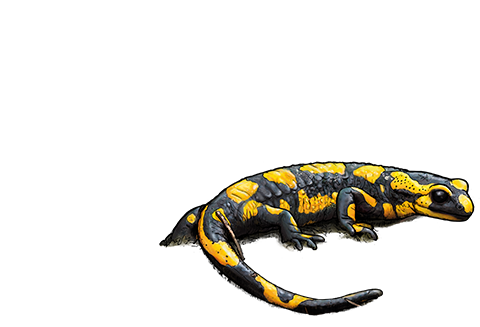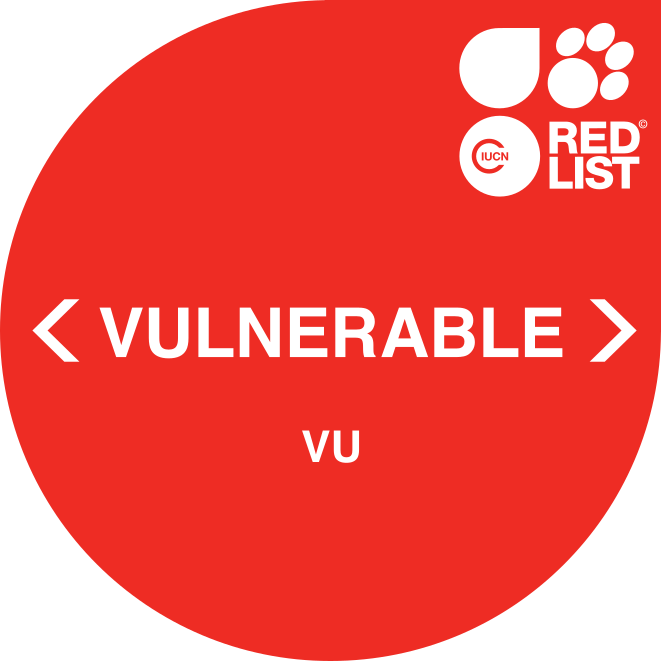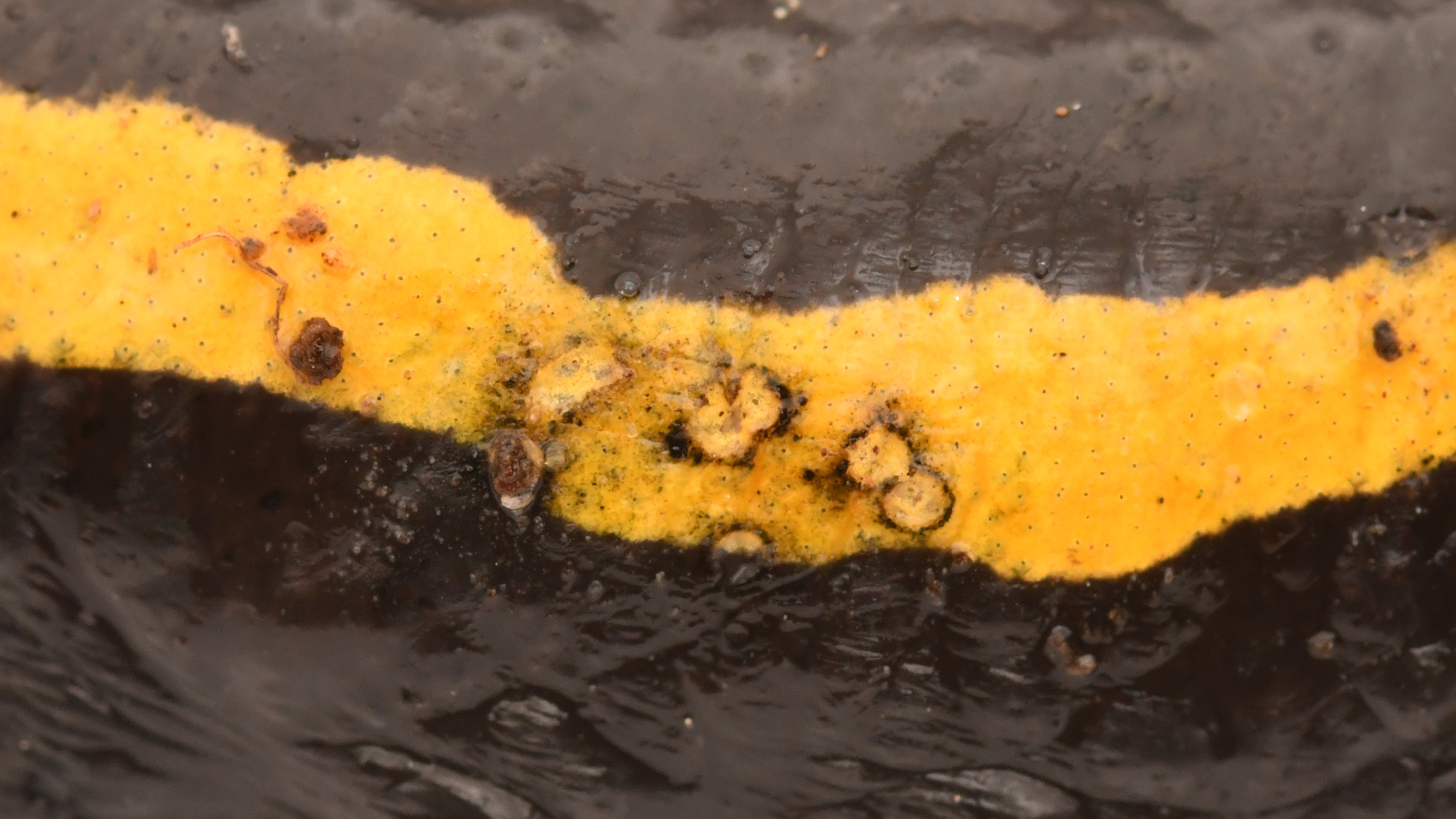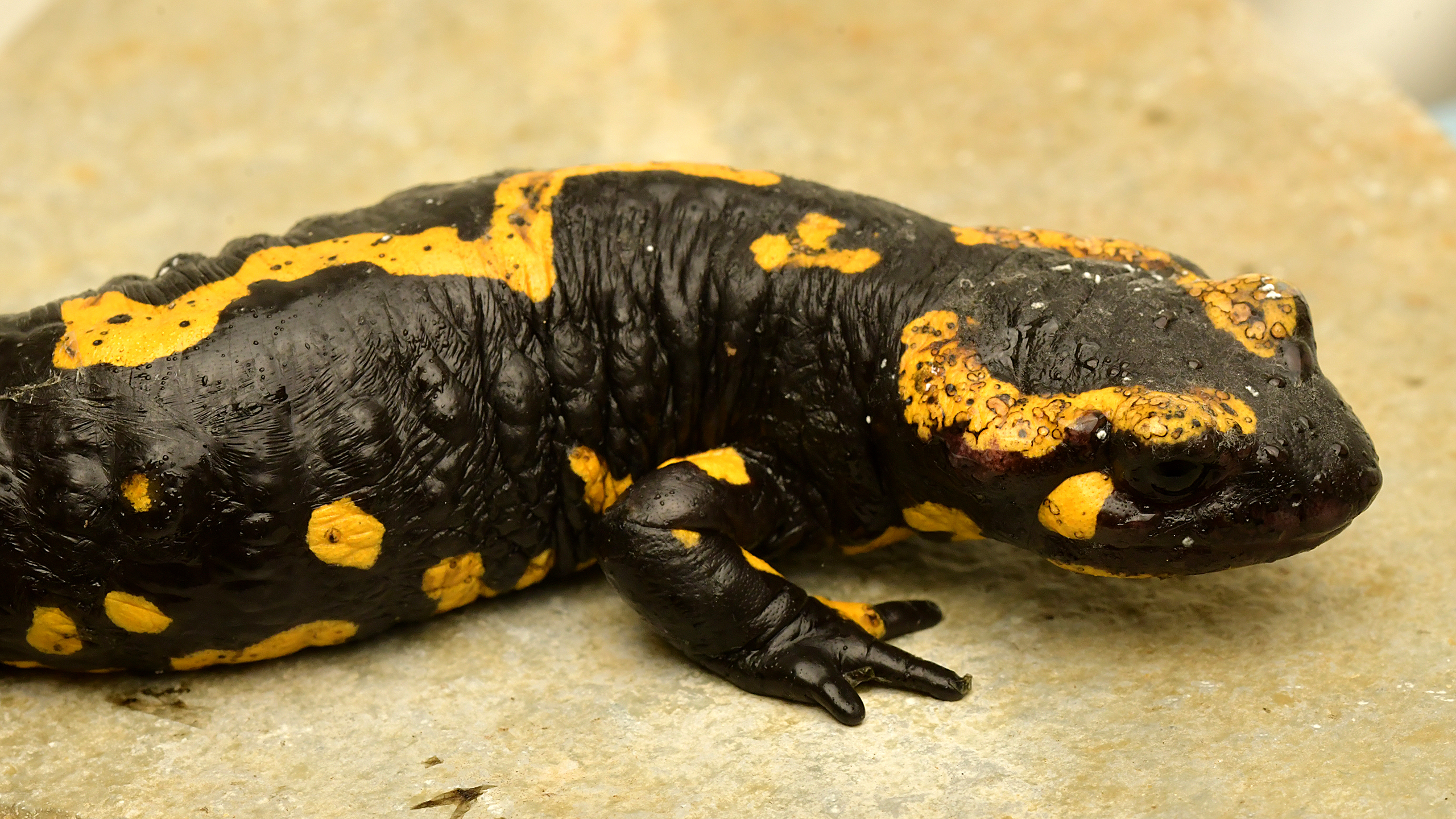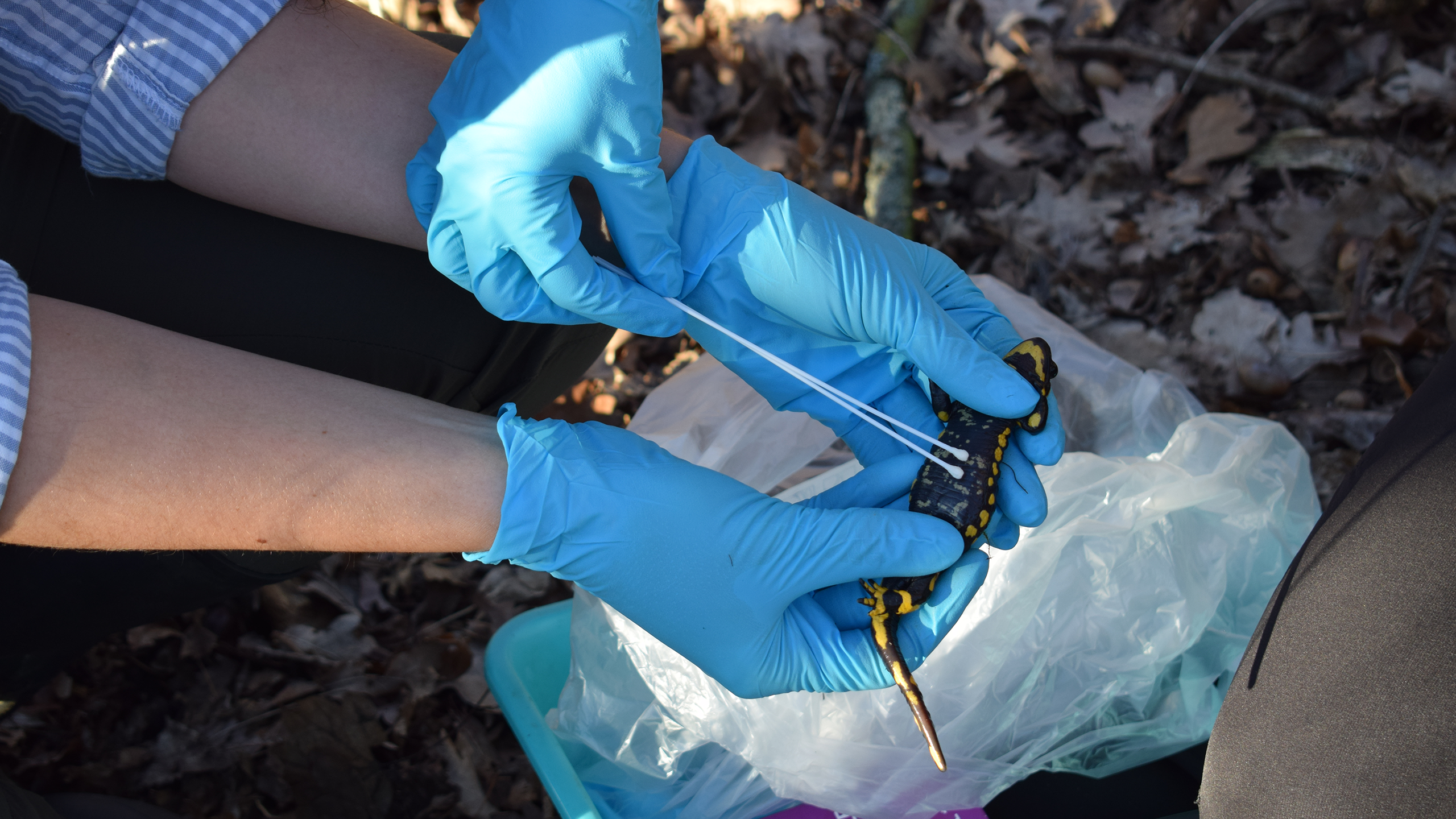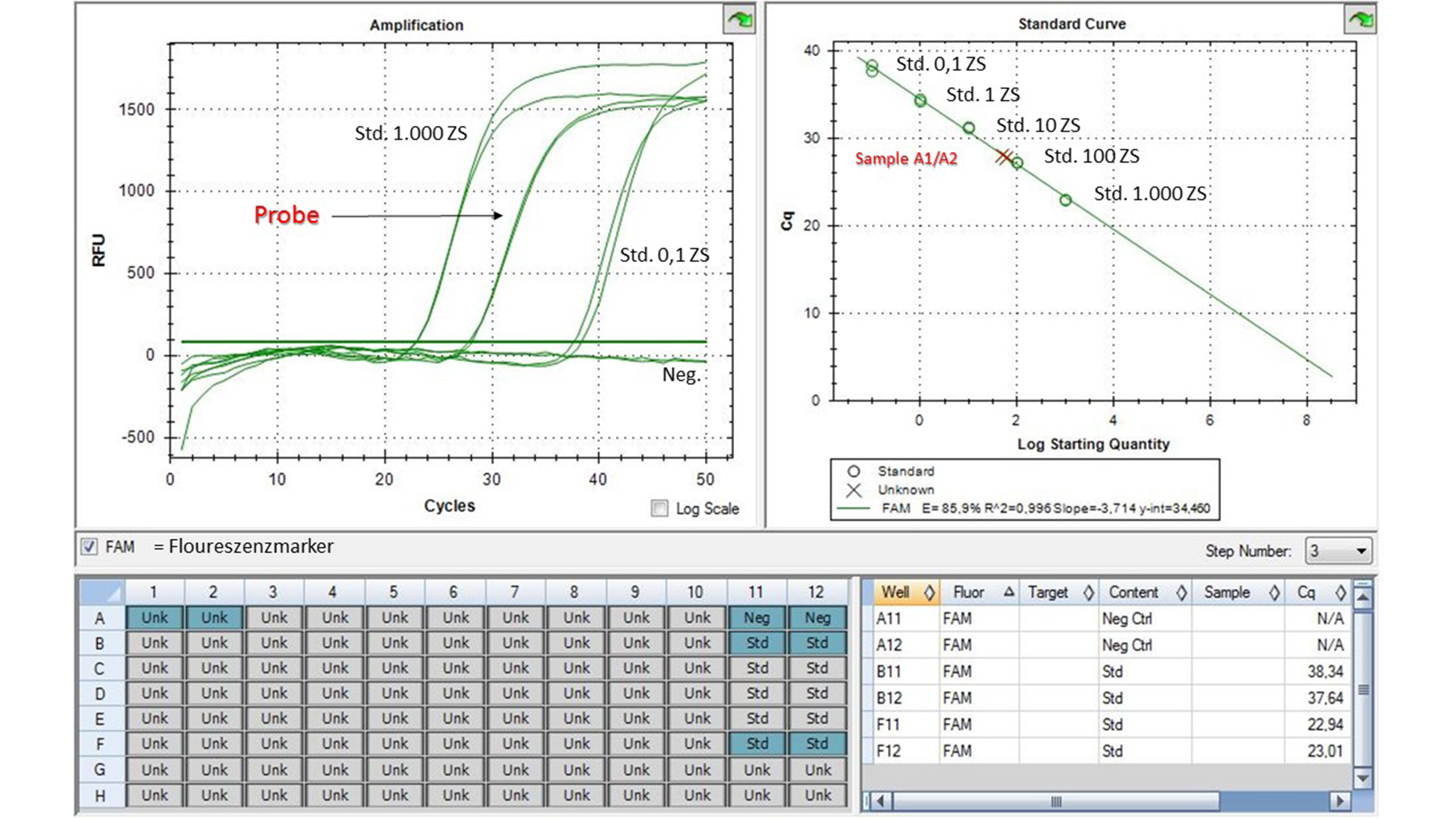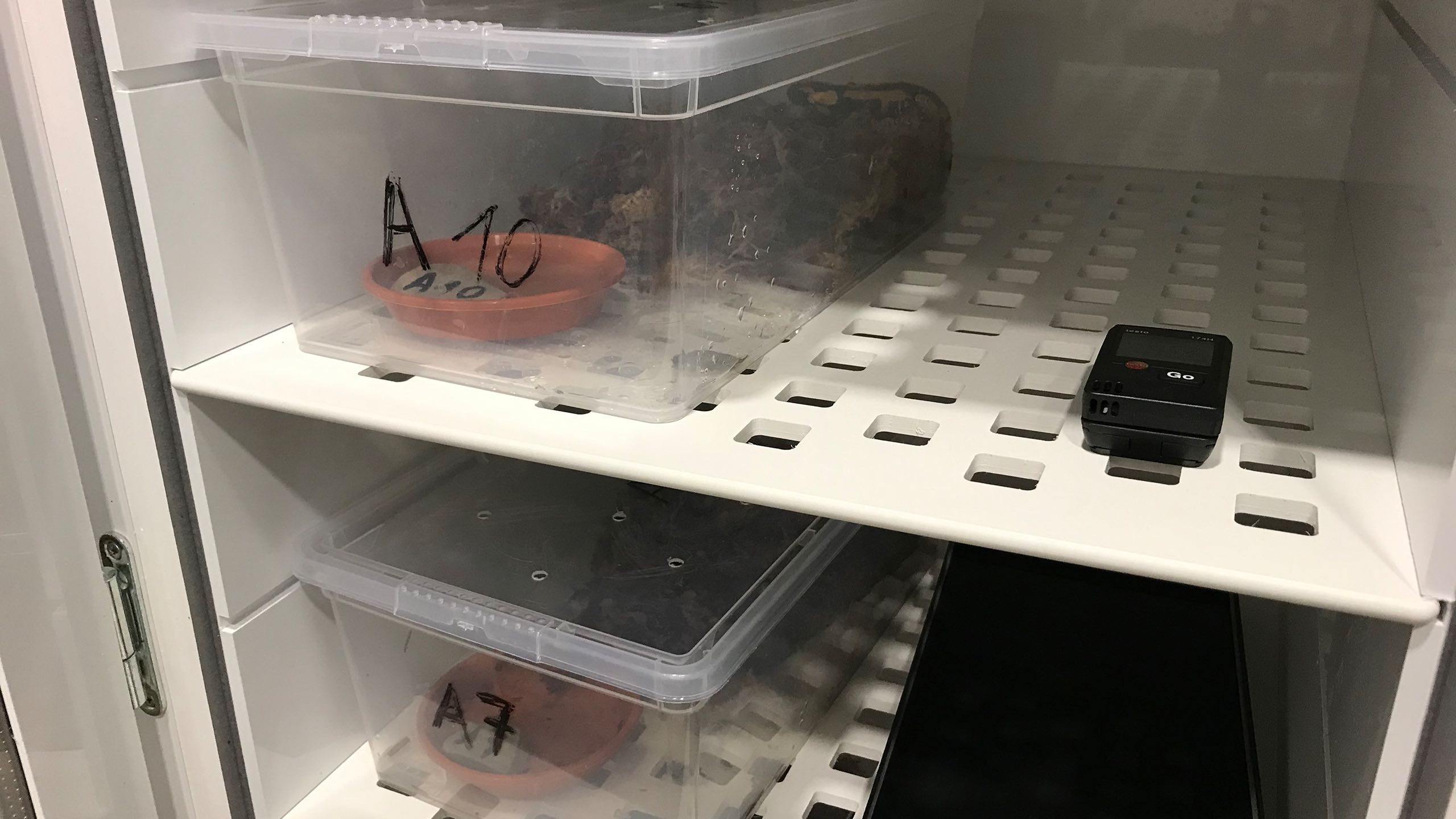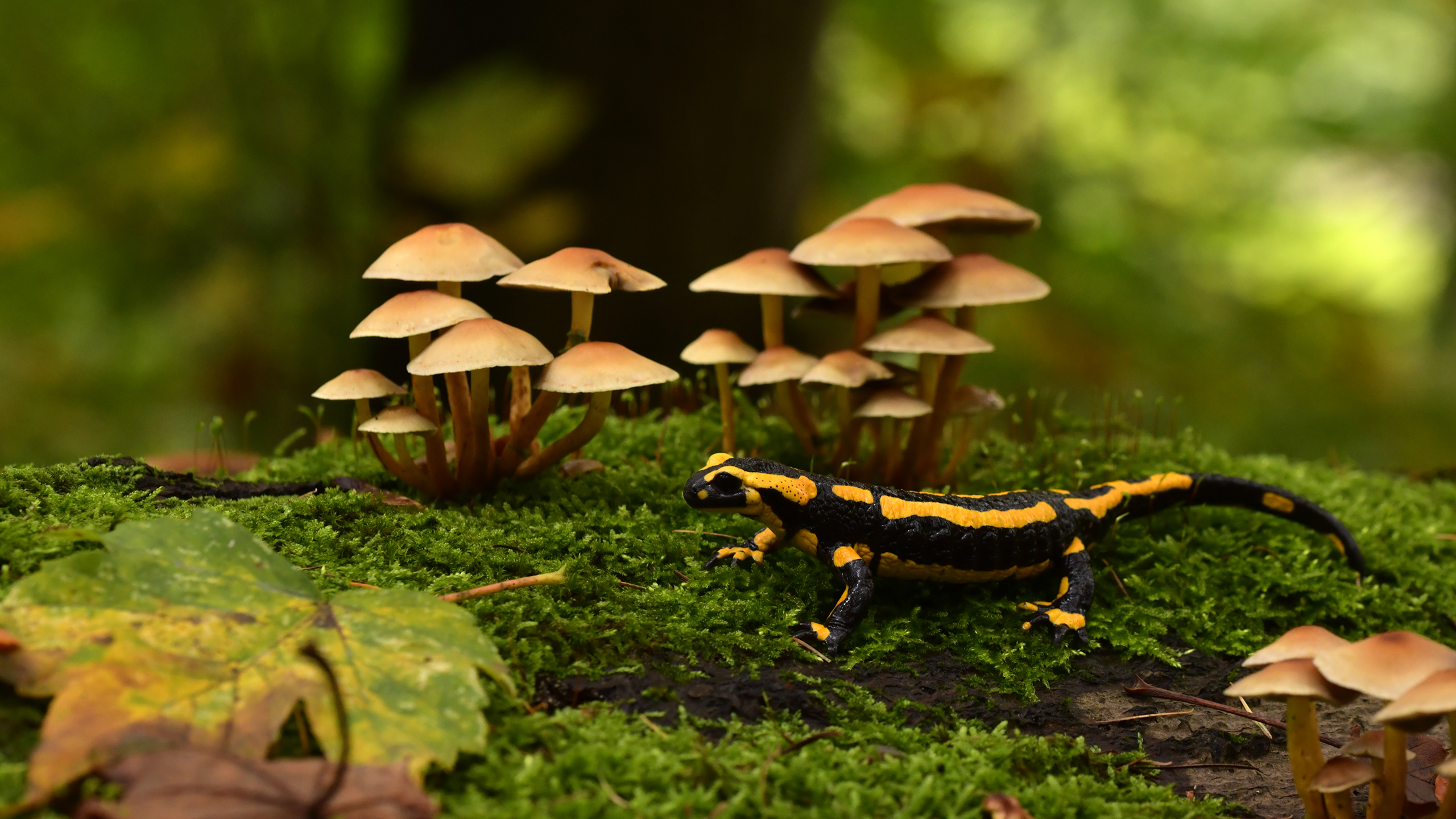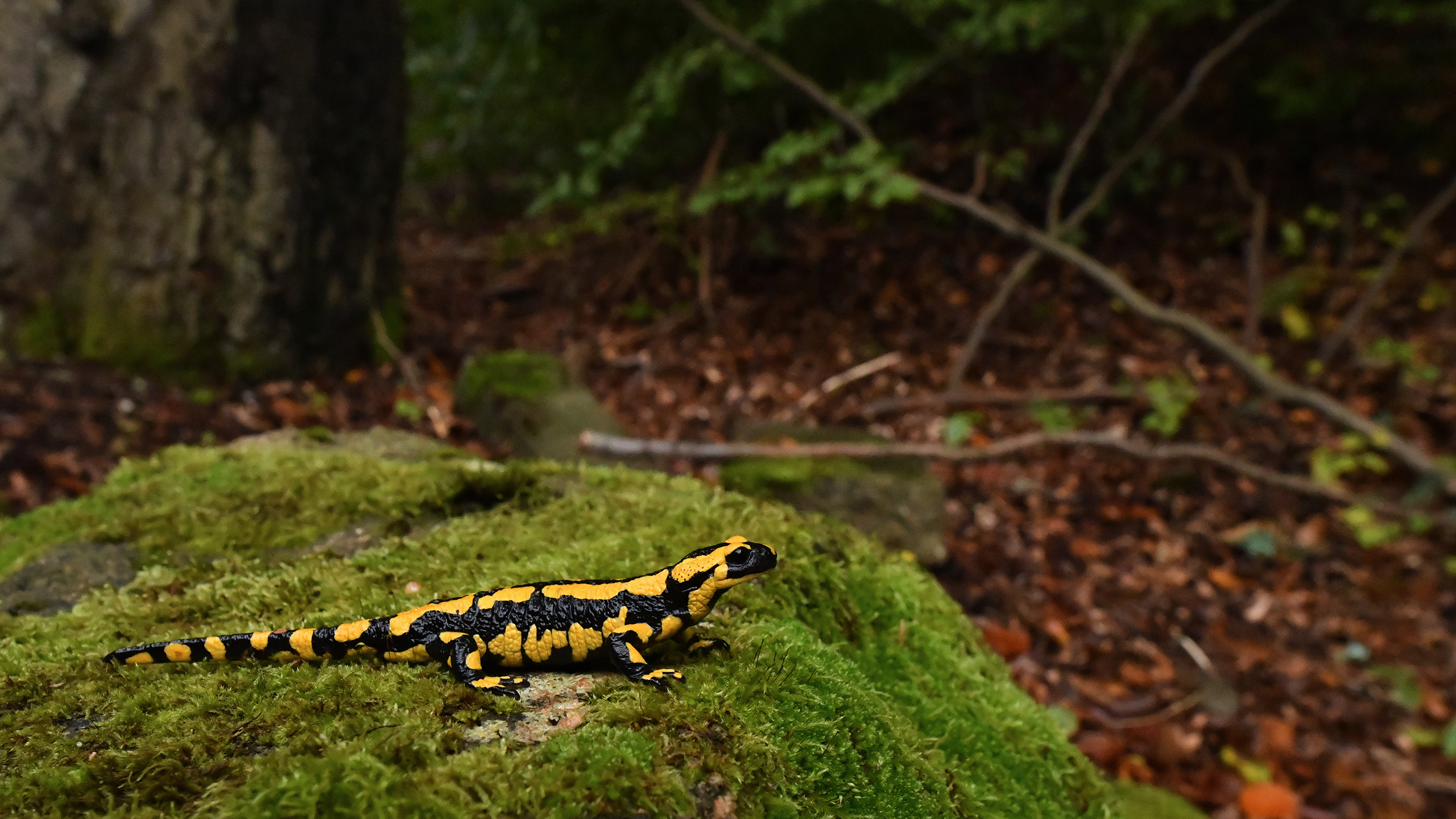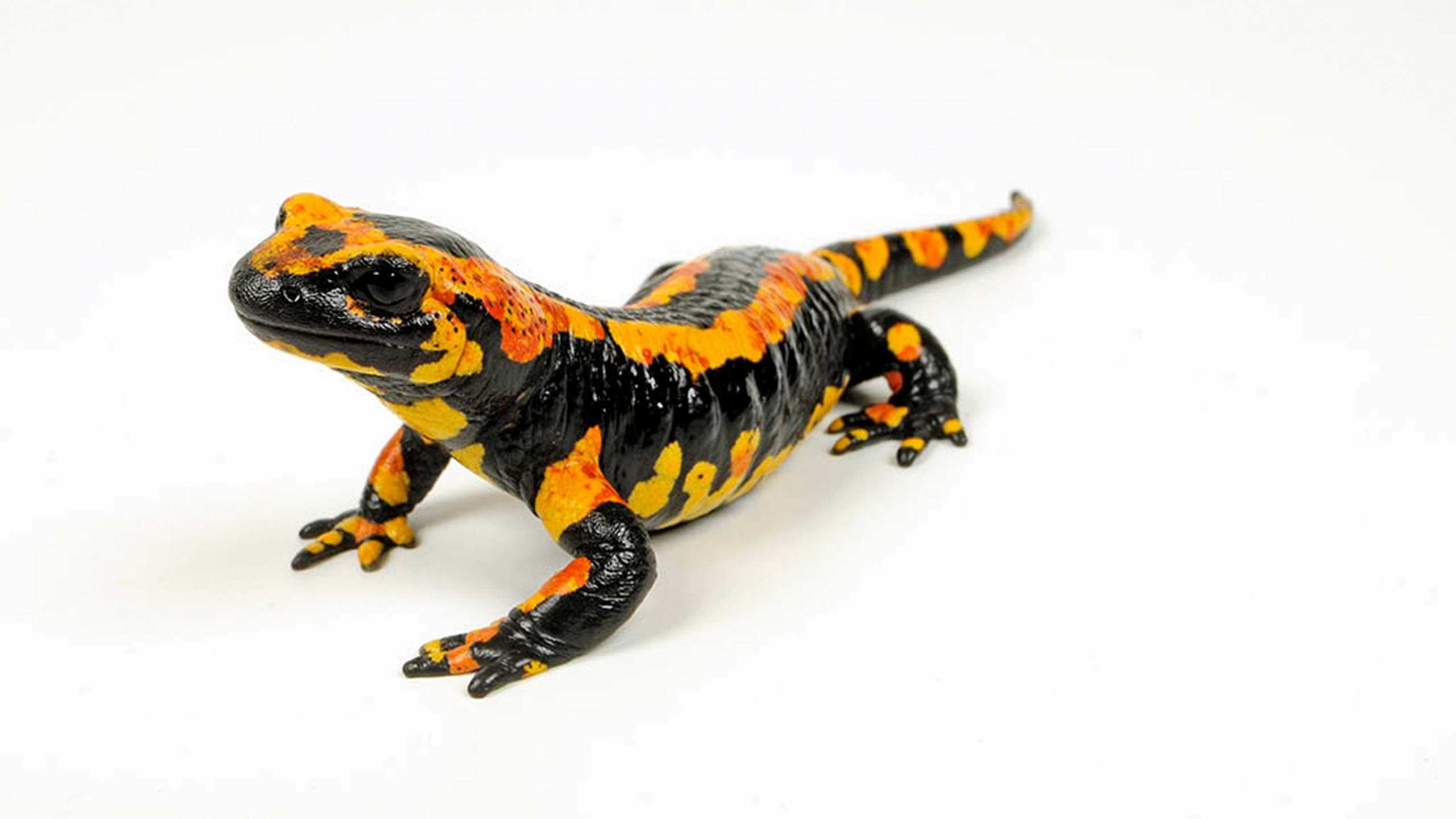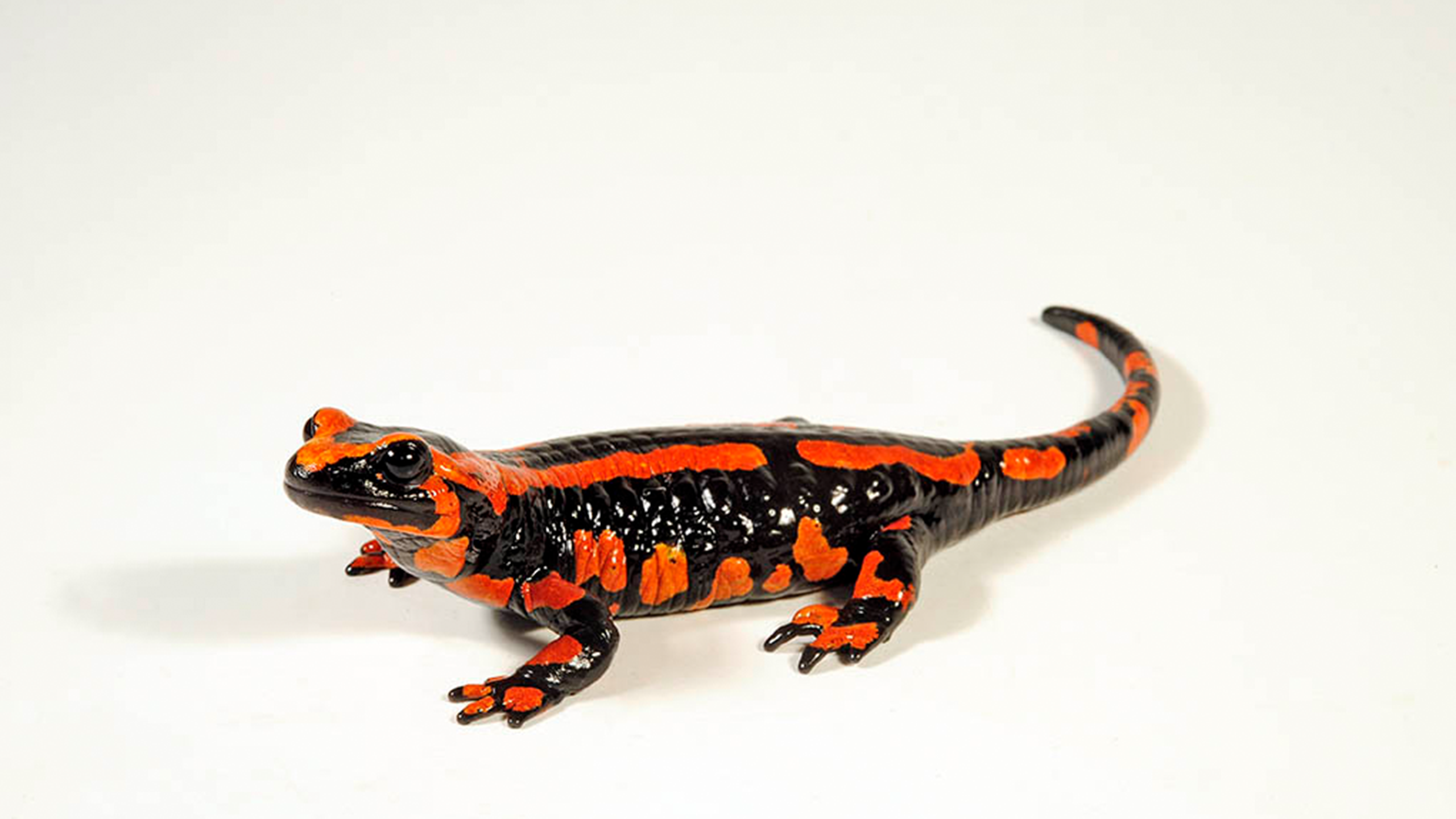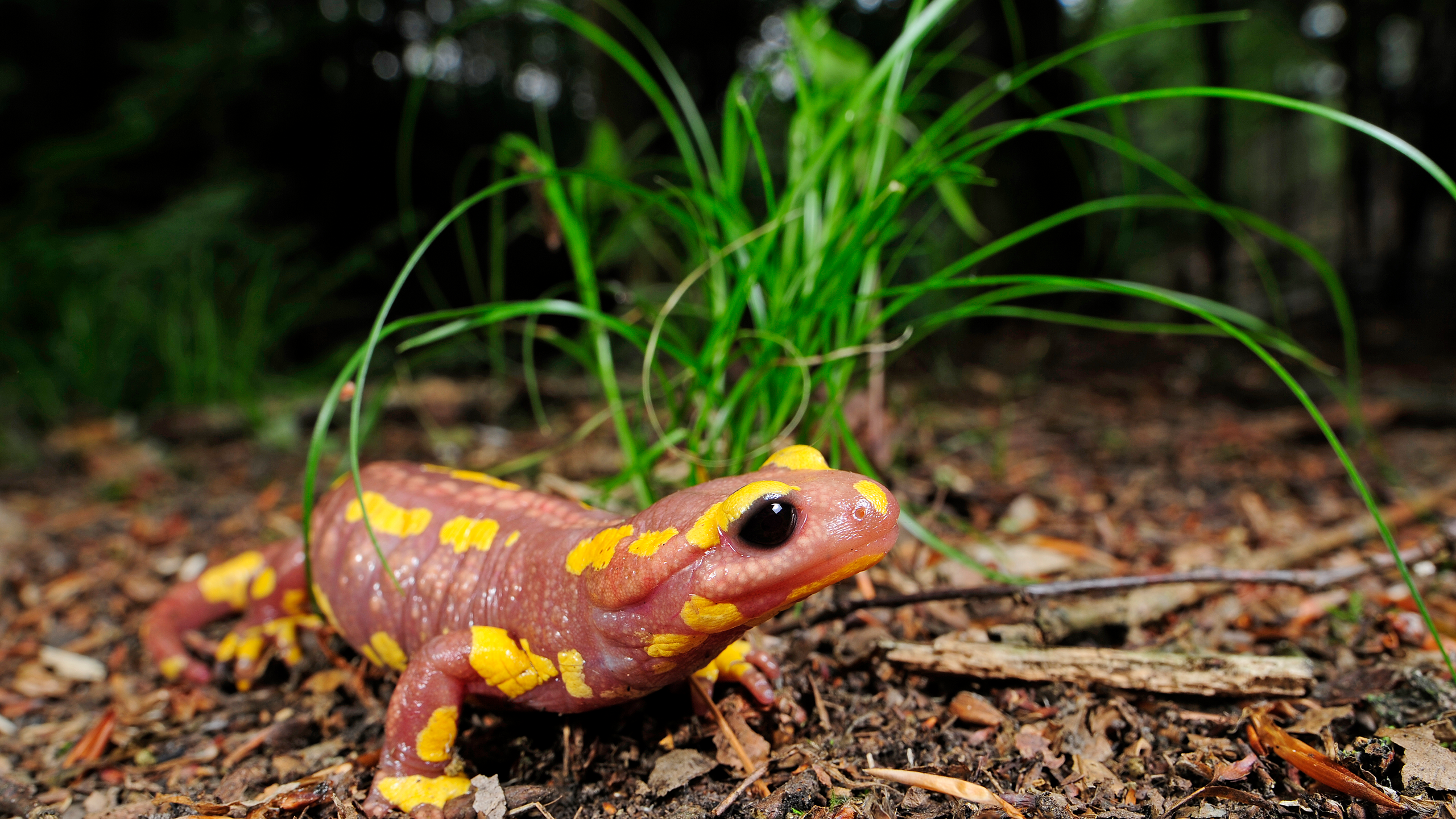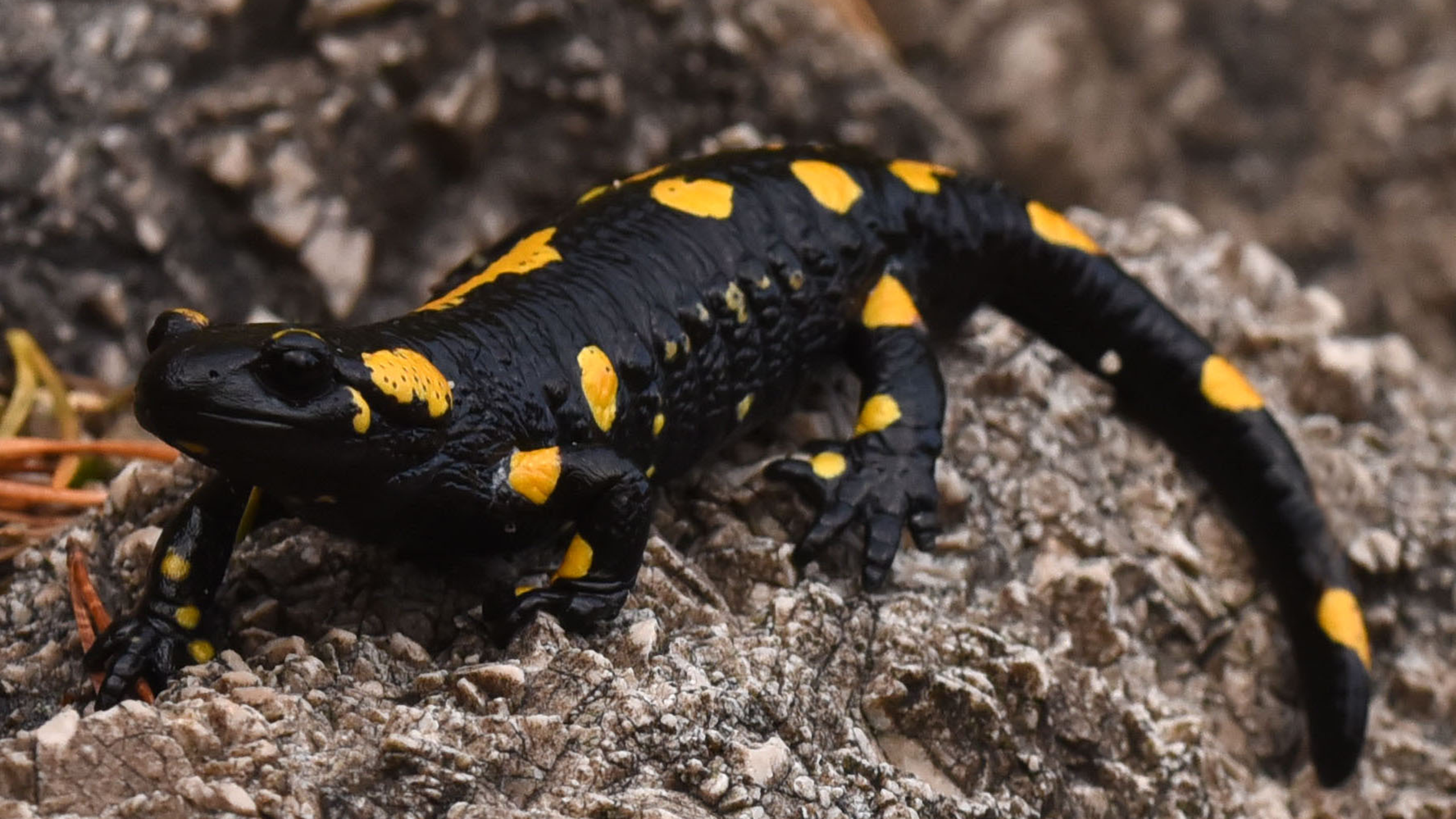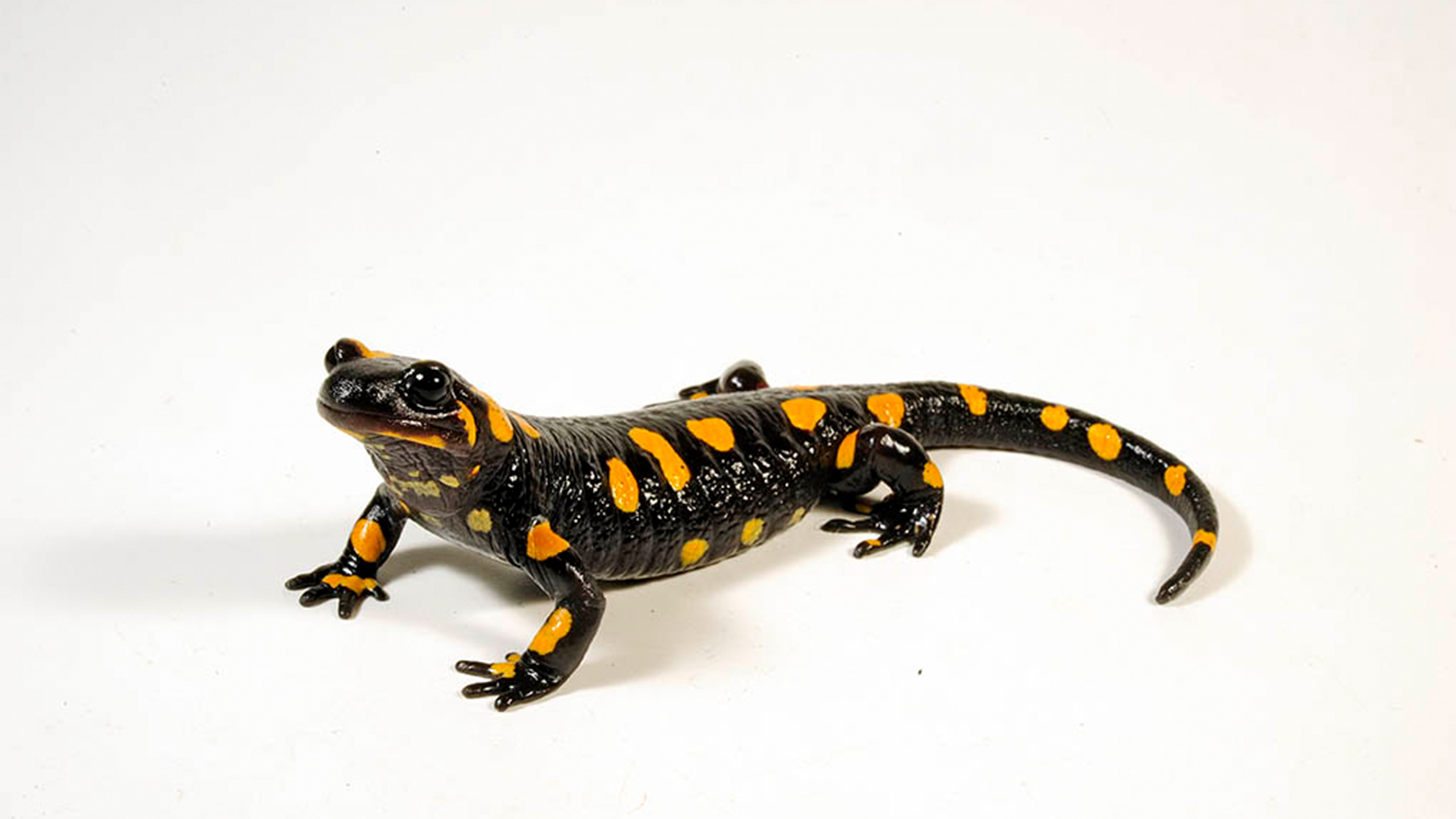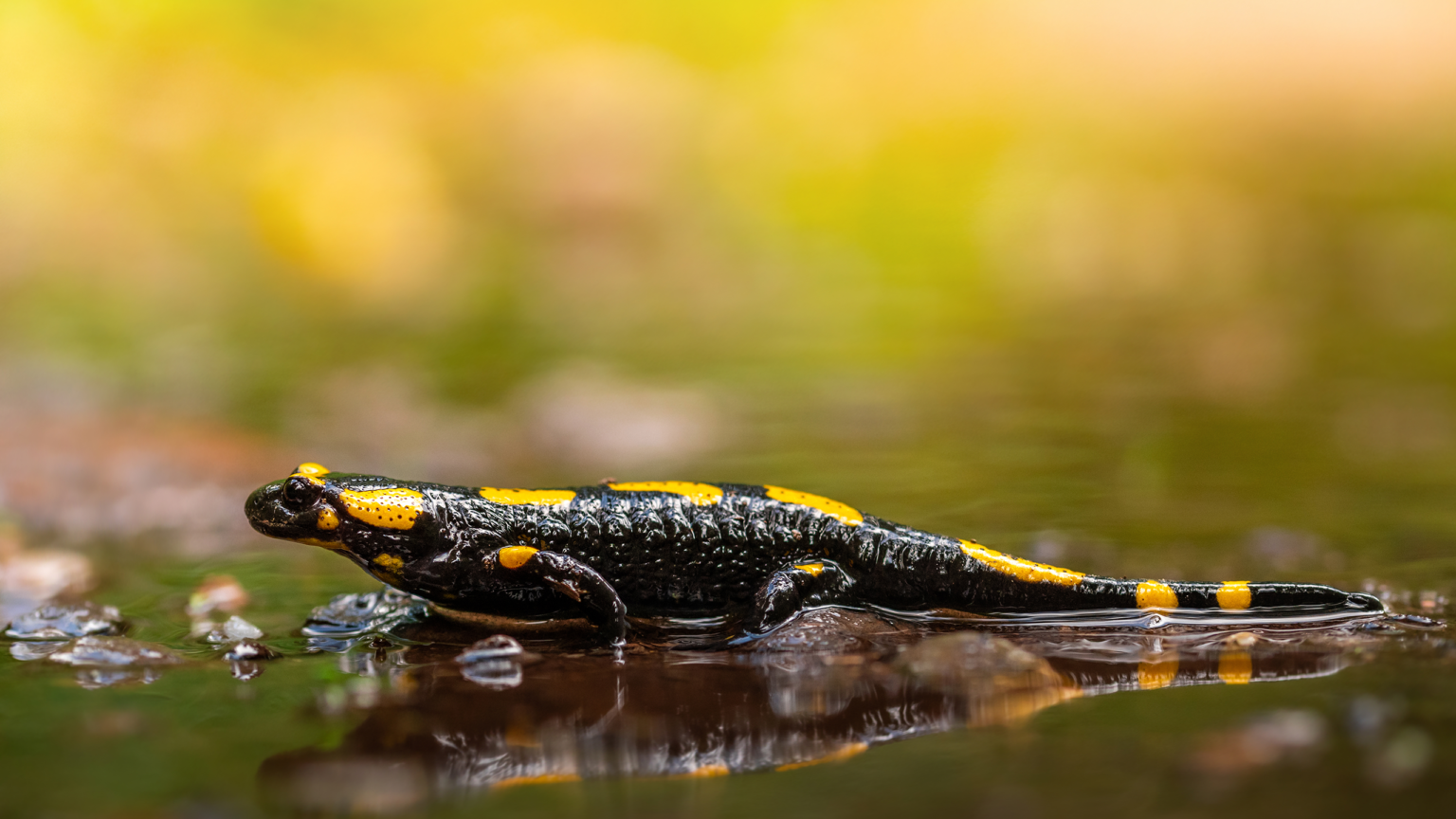Central European Fire Salamander
Salamandra salamandra salamandra and Salamandra salamandra terrestris
Central European Fire Salamander
Salamandra salamandra salamandra and Salamandra salamandra terrestris
CC goal
90 breeders
Status 11/2025
CC goal
330 animals
Status 11/2025
CC goal
90 breeders
Status 11/2025
CC goal
330 animals
Status 11/2025
With its black and yellow coloration and stately size of up to about 20 centimeters, the fire salamander is one of the best known and most charismatic amphibians in Europe. In Central Europe, it is a typical inhabitant of beech and mixed deciduous forests. Although it has been affected by habitat changes and environmental pollution, its population has not yet been considered endangered. However, a sudden new threat now raises fears for the future of this characteristic species, for which Germany bears a special responsibility.
The salamander plague
The salamander eating fungus
When numerous dead fire salamanders were suddenly found in an apparently undisturbed habitat in the Netherlands between 2008 and 2011, researchers were initially baffled. An entire, very well-studied population had been wiped out in a short period of time. Finally, the culprit was tracked down, scientifically described in 2013 – and given the self-explanatory name Batrachochytrium salamandrivorans, or Bsal for short, which translates as salamander-eating fungus.
Diversity of Central European Fire Salamanders
Unstoppable advance
According to previous knowledge, infected salamanders die unless they are treated. Unfortunately, the fungus can be transmitted not only from salamander to salamander, but also via soil, water, plants and other amphibians. After spreading from the Netherlands-Belgium-Germany border triangle through the Eifel region to the Ruhr area, it was also detected for the first time in Bavaria in 2020. There is great concern that the fungus is spreading nationwide. Even the extinction of the fire salamander in Germany and its neighboring countries is thus a realistic threat.
Unfortunately, the fungus can be transmitted not only from salamander to salamander, but also through soil, water, plants, and other amphibians.
Fire salamander died from bsal in Essen, Germany © Miguel Vences
Threatened salamander diversity
So far, nothing can be done against the fungus in nature – except to hope that it will not spread further or that the salamanders will eventually develop a natural resistance to it. By then, entire lineages of the fire salamander may have disappeared. Which would be a particularly severe loss, because not all fire salamanders are the same. In addition to individual differences, there are important regional differences. According to current knowledge, three major genetic lineages occur in Germany, distributed between the two subspecies Salamandra salamandra and S. s. terrestris. Within these “main lineages”, however, individual populations may develop their own peculiarities, be it in appearance or behavior.
A refuge from the plague
Fire Salamanders are kept in very minimalist enclosures or in near-natural terrariums. For 2–3 animals, for example, 100 x 50 cm floor space is recommended. The animals are kept dry (but with moist hiding places and a water dish) and cool (not above 20 °C in summer and below 10 °C in winter). They eat e.g. worms, crickets and beetles. The larvae are reared in aquaria.
For breeders
Basic information on biology and breeding
Fire Salamanders are kept in very minimalist enclosures or in near-natural terrariums. For 2–3 animals, for example, 100 x 50 cm floor space is recommended. The animals are kept dry (but with moist hiding places and a water dish) and cool (not above 20 °C in summer and below 10 °C in winter). They eat e.g. worms, crickets and beetles. The larvae are reared in aquaria.

